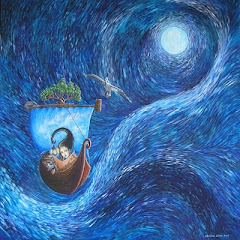A Brief History of the Talesingr Stories and their remarkable discovery
Fragmented versions of the story of the Talesingr survive across the frozen north, from Finland in the west, across the breadth of Siberia to the east. There is some speculation it may have travelled further, into Alaska, as folklore there reflects elements found in the Talesingr’s story. If this is the case, it is likely the story found its way there with people who crossed the Bering Strait and settled the Americas. Suffice to say, it is an ancient story, though how old it is impossible to say.
What little we know of the Talesingr is mostly due to the work of Professor Albert Woodford-Harding (1876-1914?). Although a Professor of Classics, Woodford-Harding was a passionate amateur folklorist who travelled to remote areas to collect folklore, songs and stories. He was particularly interested in the folklore of the indigenous peoples of Northern Europe, and lived with various groups in Finland and across Siberia for extended periods, documenting aspects of their everyday lives along with the stories and folklore that informed them. He also discovered pictorial evidence of the Talesingr’s stories in the form of ancient pictographs. He surmised that these pictographs served as mnemonic devices for tribal storytellers, as they remain enigmatic to the casual observer.
Woodford-Harding left behind a great deal of research and data, but very little was published and much remains uncategorized, due to his disappearance on a field trip to Siberia shortly before the outbreak of the World War One. It is known he and J.R.R Tolkien met at University when the latter was briefly a student of Woodford-Harding’s. It is interesting to speculate whether Woodford-Harding’s research influenced Tolkien’s later writing, most particularly the Lord of the Rings trilogy.
Woodford-Harding’s disappearance resulted in his work being lost for almost 60 years. His wife packed his research away and it was left forgotten in the family attic until her grandson found it while preparing the house for sale following her death in 1972. Modern scholars have been astounded at the amount of data collected, and although Woodford-Harding’s methods were not always exacting and disciplined, his contribution to the field cannot be underestimated. While details of individual peoples are sometimes sketchy and the depth of information collected is uneven, he was the first to document the similarities between the story fragments of many groups, thus showing the links between what up to that point in time had been considered to be individual folklore unique to individual ethnic groups. By demonstrating this clear link, Woodford-Harding was able not only to prove the connections between widely disparate ethnic groups, but also provided clear evidence of the survival of a myth over several thousand years, and vast migratory distances.
___________________________________________________________________________________________________________________
All text and images © Christina Cairns 2011







4 comments:
Fascinating, thanks for the background - and another amazing talisman!!! I do hope some remain from the art expo!
Well, it might all be true......or perhaps it's all just the product of a fevered imagination! ;-)
I'm loving following this as it breathes into life. Will share it with my husband who is another passionate amateur folklorist (at: http://westcountryfolklore.blogspot.com/ ).
Clever! You made it sensible enough for it to be possibly true, although the mysterious disappearance was a big clue ;-) Nice mention of JRR as so much of lotr was based on Finnish folklore. Loved it and love the name Talesingr too.
Post a Comment